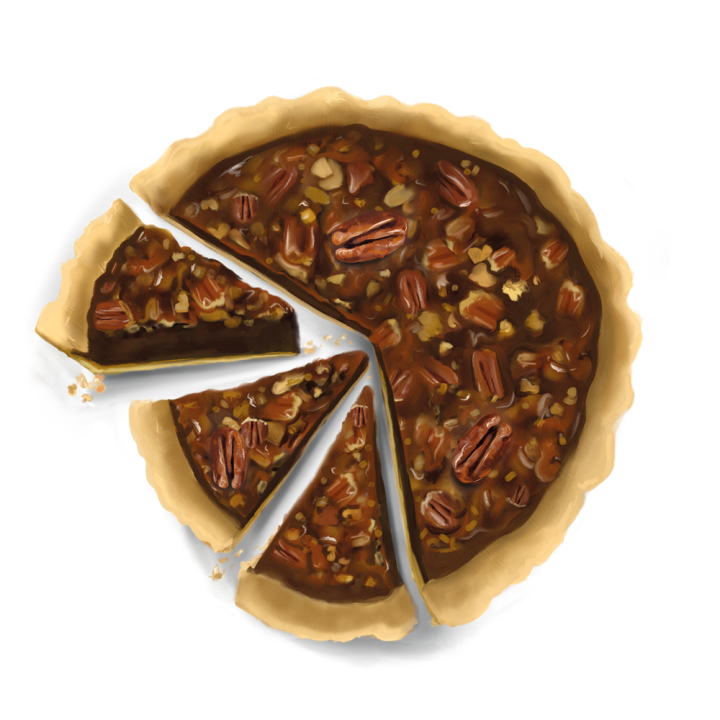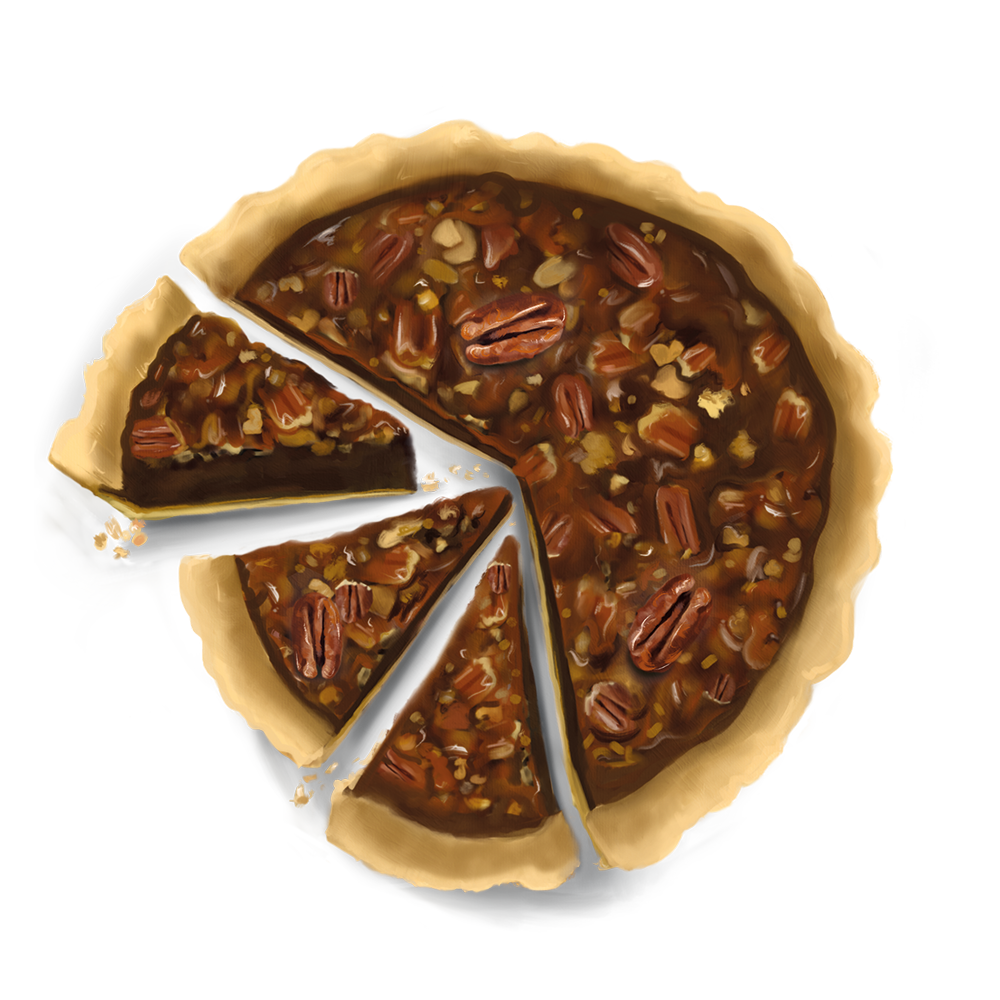
A pecan pie has been on my kitchen table for the past few days, due to circumstances rendering every other surface or shelf unusable, thanks to badly timed building work and an absent fridge. A mixing bowl sits over it, protecting it from dust and sticky fingers.
I’ll tell you what I’ve learned: everybody loves pecan pie. Everyone who has walked past it has stopped dead, done a double take, and then rhapsodised unprompted about the pie’s virtues. At one point, excitement was generated simply by the pie being in the background of a video call.
Pecan pie, one of America’s traditional celebration (especially Thanksgiving) puddings, is adored by children, but it has a dark, complex sweetness that wins over grown-ups too, and the toasty nuts bring texture as well as richness.
In fact, this pie didn’t arrive in American kitchens until the very end of the 19th century. The earliest published recipe is in Harper’s Bazaar in 1886. The pie was subsequently popularised by a corn syrup brand, Karo, which posted the recipe on the label of its cans. Soon it started to appear in the cookbooks of the day, and its popularity has not waned. In 2013, it was officially designated the state pie of Texas.
For me, a pecan pie has to be absolutely jam-packed full of coarsely chopped pecans. Toasting those nuts that will be submerged in the filling brings a deeper flavour to the pie. In pies gone by, I used to carefully place concentric circles of whole pecans on the top of my filling, but I’ve come to realise that they risk burning, and make cutting neat slices far trickier. I want to be able to bake the pie to the perfect wibbly set point without worrying about scorched nuts. Happily, I like the more rustic appearance of the pie made this way: the cross-sections of the chopped nuts create a glossy, burnished top. It’s beautiful.
The gooey filling is made up of those chopped pecans suspended in a butterscotch-heavy sauce, rendered almost custardy with lots of eggs. Dark corn syrup is the classic sweetener for a pecan pie, but it is tricky to get in the UK. For my money, dark muscovado and golden syrup combined are a good imitation, and far easier to source. They bring deep caramelly notes, making the flavour darker than that of the British treacle tart.
Boiling the syrup mixture for a couple of minutes before leaving it to cool will mean that the pie is still gooey when you cut into it, but it will hold its shape and not just dribble on to the plate. Spices abound at this time of year, especially in the realm of pies, but there’s no need for them here. Pecans naturally have rich buttery, maple flavours, and these should shine through. I will confess to adding a generous splash of bourbon, though, which lifts the custard without thumping the other ingredients into submission.
Pecan pie is an extremely sweet pie, and it needs a robust, almost savoury pastry. I use American pie crust as my pastry here, an unsweetened flaky pastry, with a generous pinch of salt. The process of making classic pie-crust pastry is similar to shortcrust: you simply need to stop short in the mixing, so that the dough still contains large chunks of butter. This creates uneven pockets of steam as the pastry bakes, which give the distinctive flaky texture.
Makes: 8
Hands-on time: 30 minutes
Cooking time: 45 minutes
For the pie crust:
- 175g plain flour
- ¾ tsp fine salt
- 120g butter, cold and cubed
- 60ml very cold water
For the filling:
- 250g pecans, roughly chopped
- 3 eggs and 1 egg yolk, beaten
- 200g dark muscovado sugar
- 150g golden syrup
- 1 tsp fine salt
- 60g salted butter
- 1 tsp vanilla paste
- 2 tbsp bourbon
- To make your pie crust, mix the flour and salt together in a large bowl. Add the butter, and rub the flour and butter together until the butter is in gravel-sized lumps. Add the water slowly, until the dough comes together; you may not need all the water. Knead briefly with floured hands until you can push the dough into a disc; wrap in clingfilm and refrigerate for an hour.
- Once the pastry has rested, remove it from the fridge, unwrap, and place on a lightly floured worktop. Preheat the oven to 180°C. Using a lightly floured rolling pin, roll the pastry out into a circle the thickness of a pound coin, about 10in in diameter.
- Flour the top of the pastry, then roll it up on to the rolling pin and unroll over an 8in pie dish. Ease it into the tin and against the sides, and fold any overlapping pastry in on itself to create a thicker edge. Crimp this with your fingers, or press with the tines of a fork, to create an outside crust.
- Line the pastry with baking paper, and fill with baking beans or dry rice. Bake for 25 minutes, then remove the baking beans and lining and return to the oven for a further five to ten minutes, until the pastry is a golden colour and dry to the touch. Remove from the oven and set aside. Reduce the oven temperature to 160°C.
- To toast the chopped pecans, put them in a dry frying pan over a medium heat, and shuffle them until they start to smell toasty. Nuts burn easily, so pay attention, and remove from the heat as soon as you can smell them.
- Put the butter, golden syrup, sugar and vanilla paste into a saucepan, and bring to a boil. Allow to boil for a couple of minutes, and then set aside to cool. When the mixture has cooled enough that you can touch the outside of the pan, mix in the eggs thoroughly, and then stir through the bourbon followed by the nuts.
- Pour the mix into the pie crust. Bake for 30/40 minutes, until set – the top should be glossy but not wet, and the filling should have the faintest jiggle. Leave to cool a bit before serving.








Comments